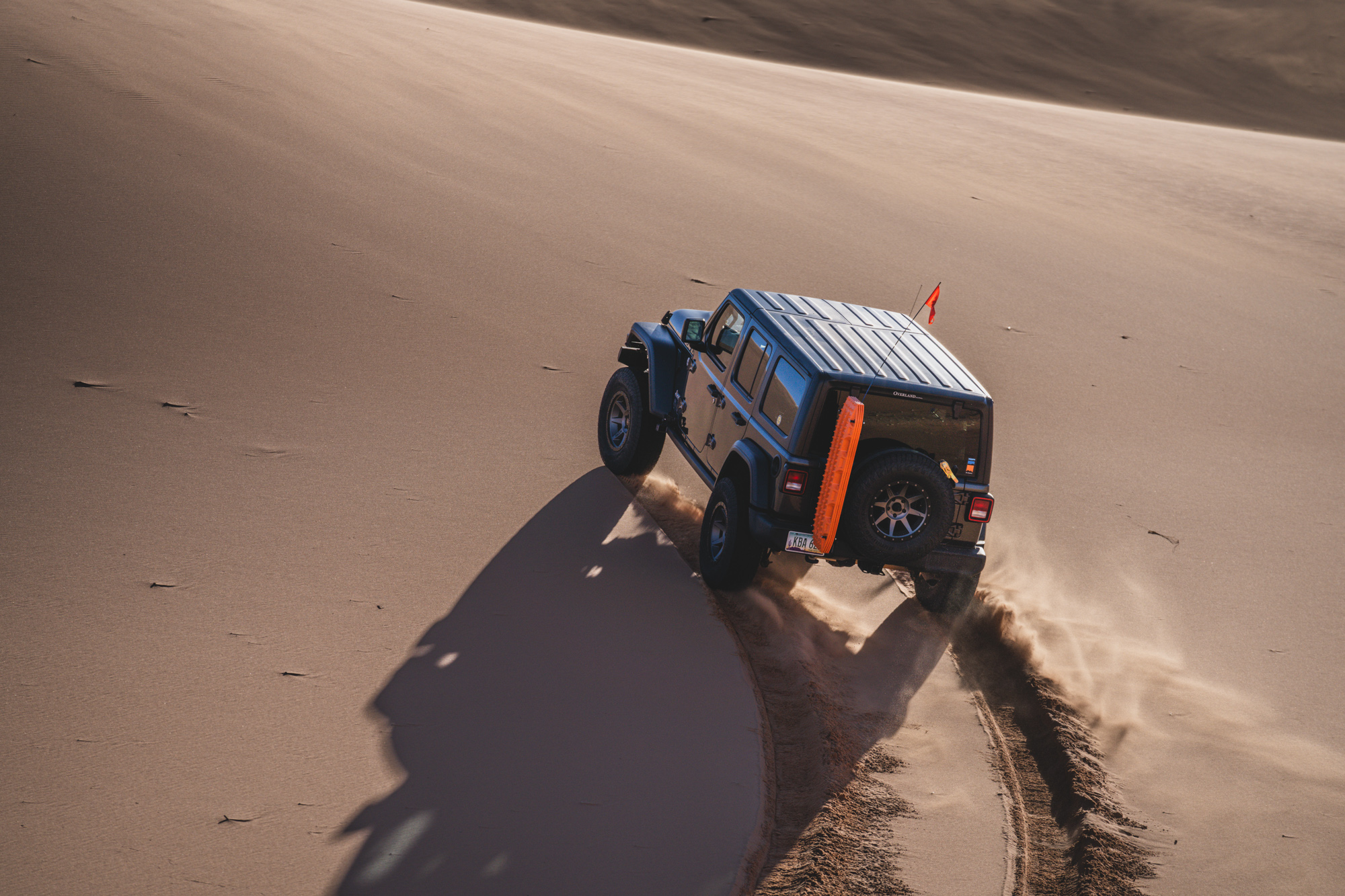Join us for episode four of our educational series on Tires for Overlanding, where we review selecting various tires, driving and recovery, vehicle preparation, Tread Lightly, and more. For this fourth episode, we discuss the fundamentals of driving in sand and the dunes, including tire pressures, leeward and windward side of the dunes, tire selection, silica composition, flotation, temperatures, and more.
Presented by Hankook Dynapro Tire
Key Considerations When Overlanding in the Sand and Dunes:
- Lower tire pressure is the greatest contributor to driving success in the sand and dunes for a standard overland vehicle.
- In sand with a standard (i.e., lower horsepower) vehicle, an all-terrain tire with a modest tread pattern will perform best, as it provides the best overall footprint regularity for flotation and limited disruption of the surface structure.
- The cooler the temperature, the more compacted and nested the silica will become, increasing flotation and the sand’s sheer strength. Hot sand expands the air between the silica, reducing load bearing.
- The higher the moisture content of the sand, the better the flotation. The silica structure is partially supported and bound through surface tension by the water.
- Safety is the driver’s responsibility, so fit a flag if required (or even if not), and do not fly blindly over a dune crest. Look for other users.
- Mount gear low and far forward in the vehicle. Secure the load properly to prevent shifting equipment or the possibility of a projectile.
- Run with your headlights on in the sand and dunes to increase safety.
- Driving dunes in the mid-day sun is the most challenging time, as the surface will lack shadowing to aid driving.
- Mud tires are the least effective in sand and dunes, as the tread face has less area (the blocks are interrupted), and the aggressive tread pattern will be more likely to dig through the compacted surface. On high-horsepower and lightweight vehicles, mud tires or paddles work well through sand displacement, resulting in thrust.
- Too much water in the sand can result in quicksand.
- When driving in sand on the beach, wash the chassis off as soon as practical to avoid corrosion.
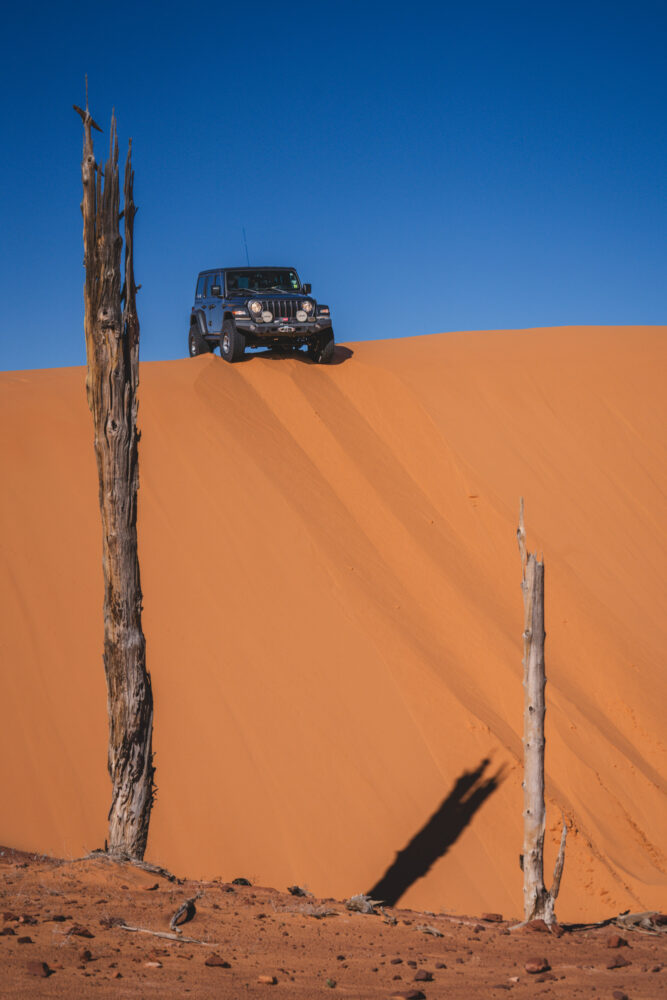

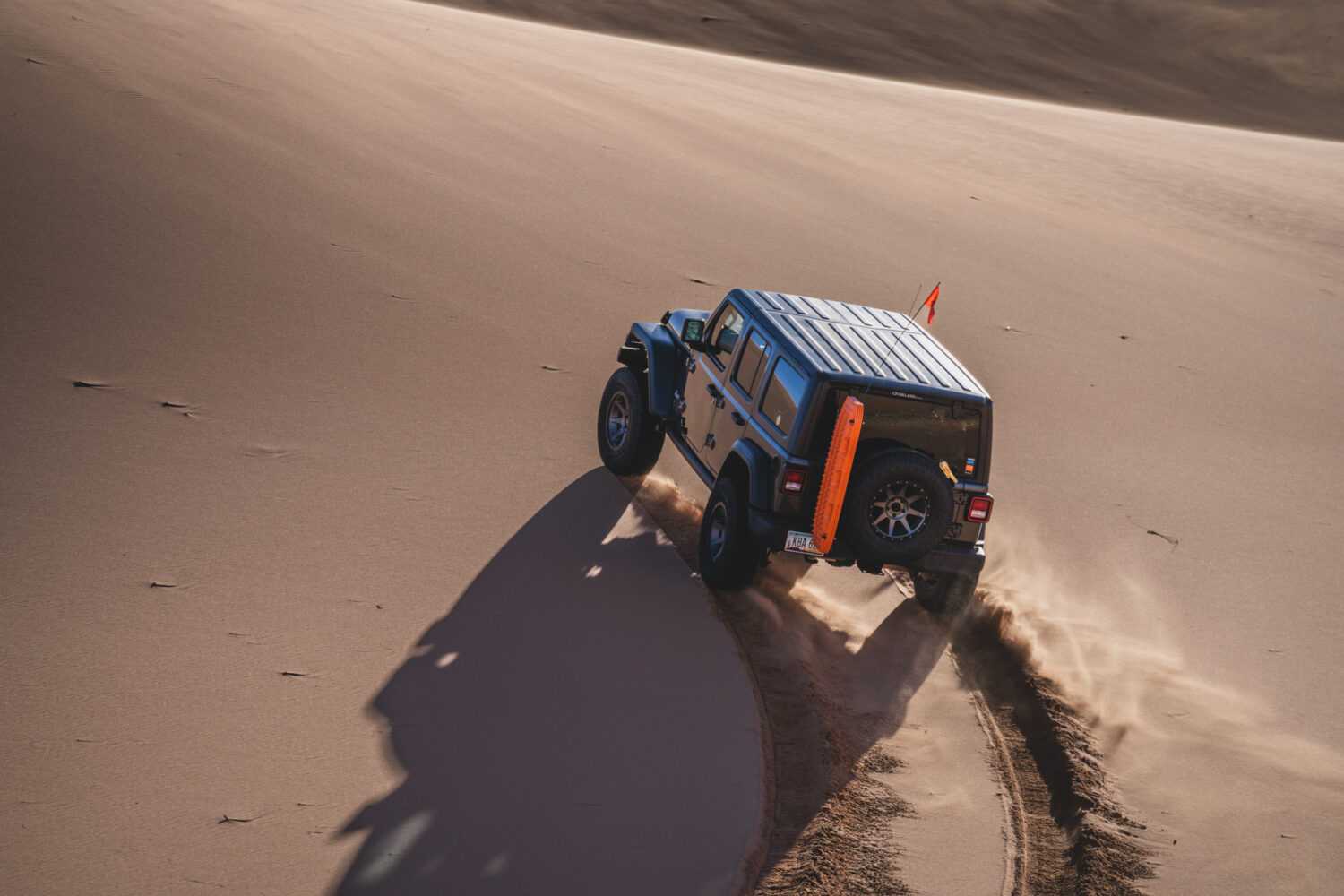
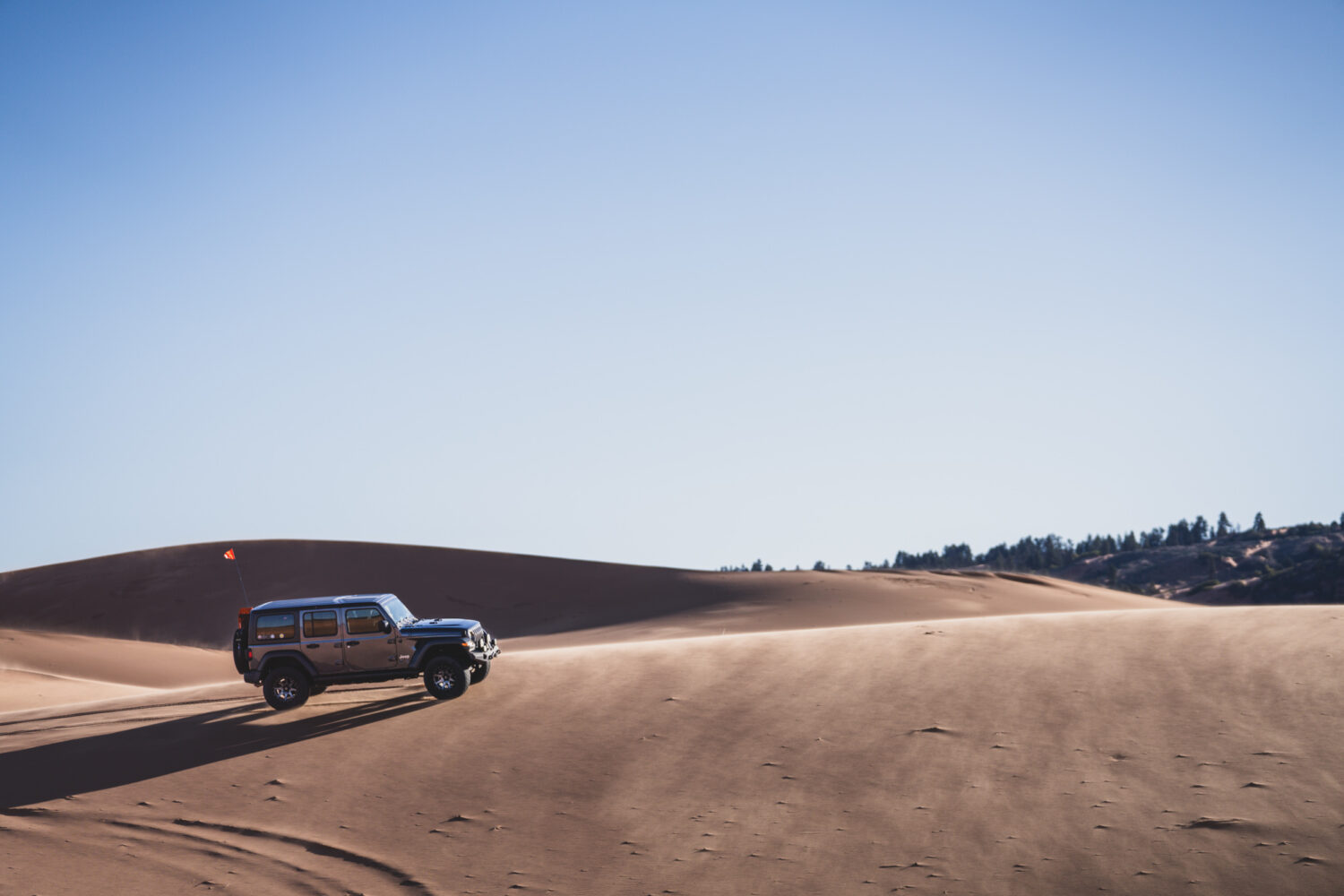
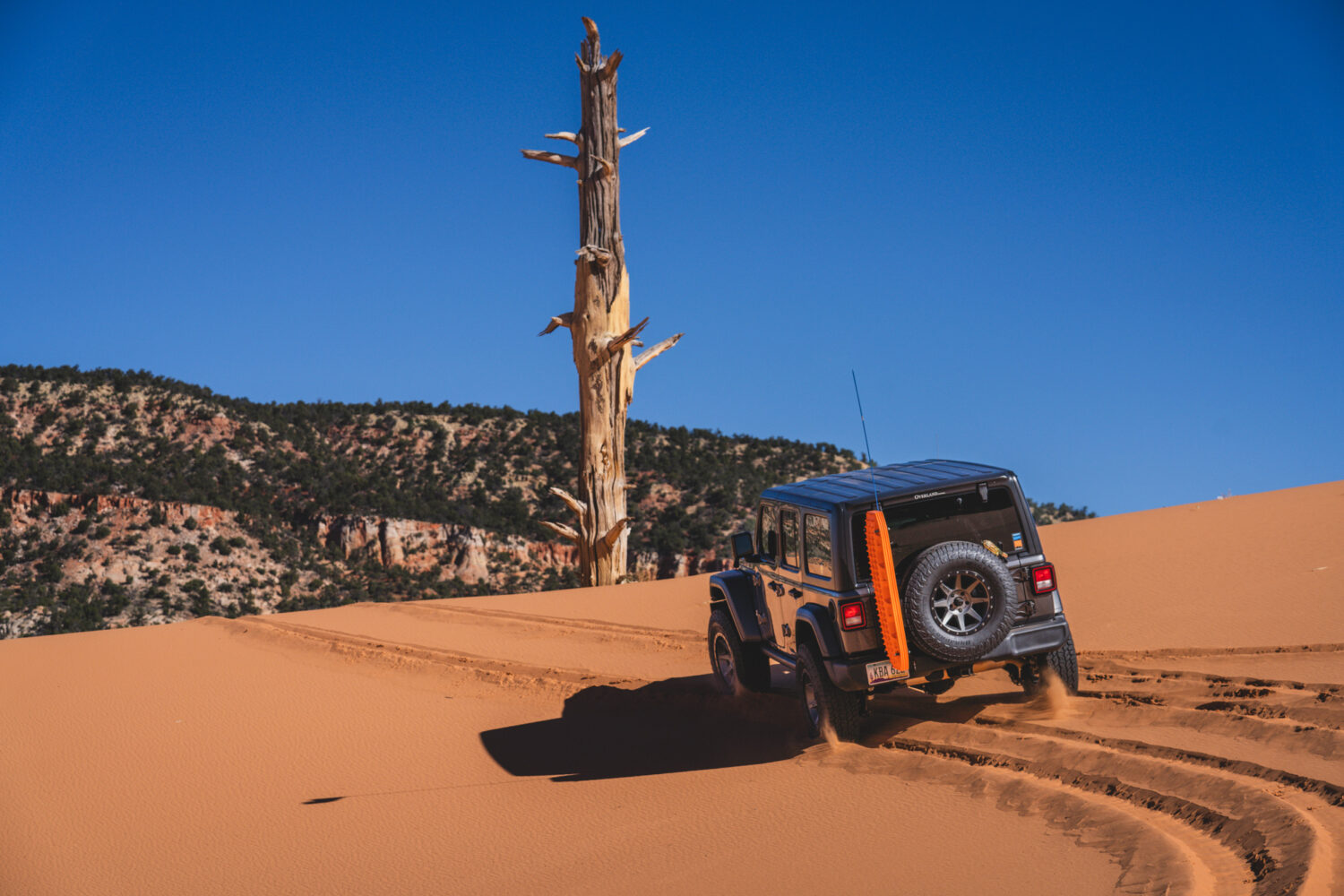
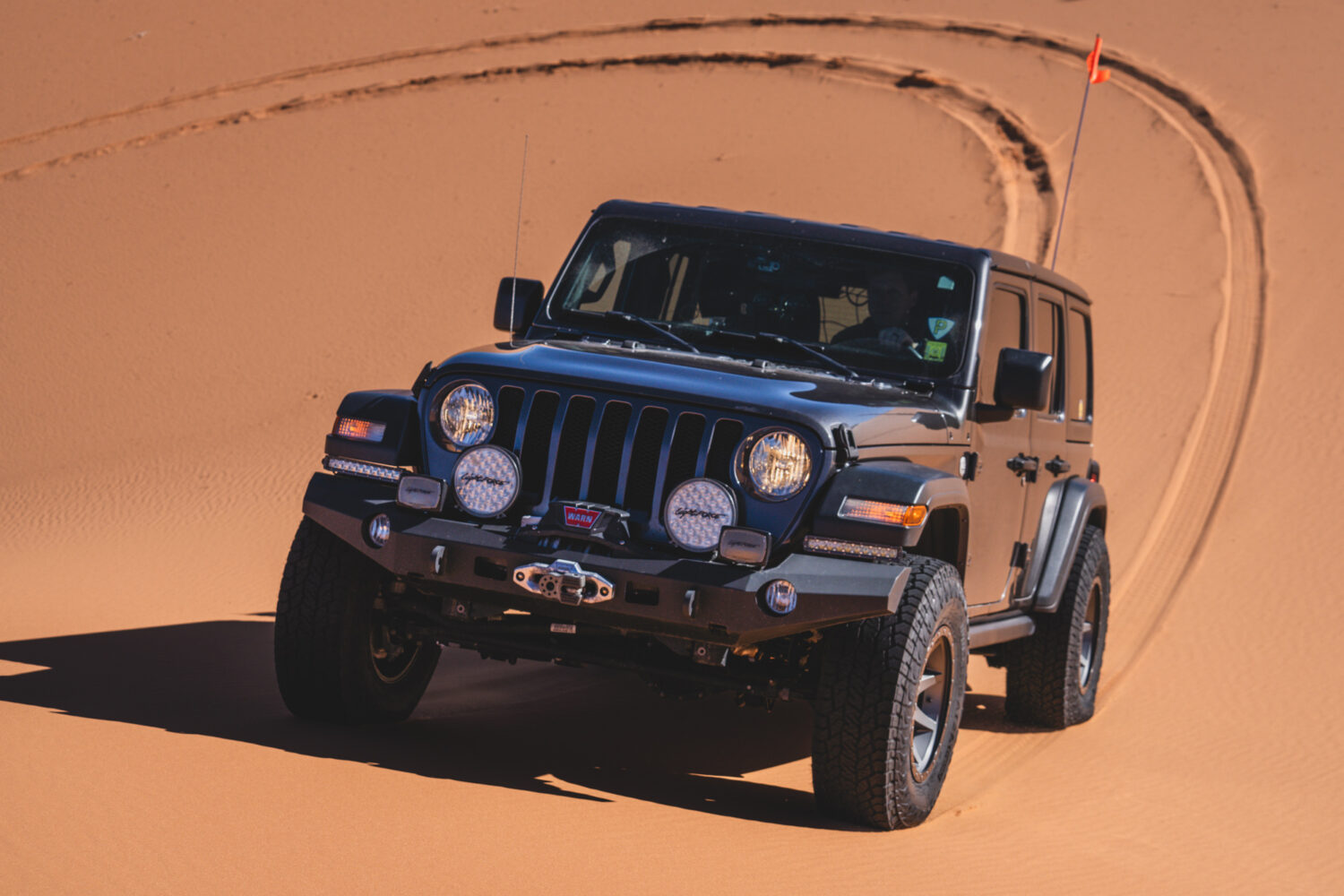
Read more:
Tires for Overlanding Episode 1: Mud Tires
Tires for Overlanding Episode 2: All-Terrain Tires
Tires for Overlanding Episode 3: Airing Down for Backcountry Travel
Tires for Overlanding Episode 5: Recovery Techniques
Tires for Overlanding Episode 6 :: Overland Vehicle Preparation and Treading Lightly


